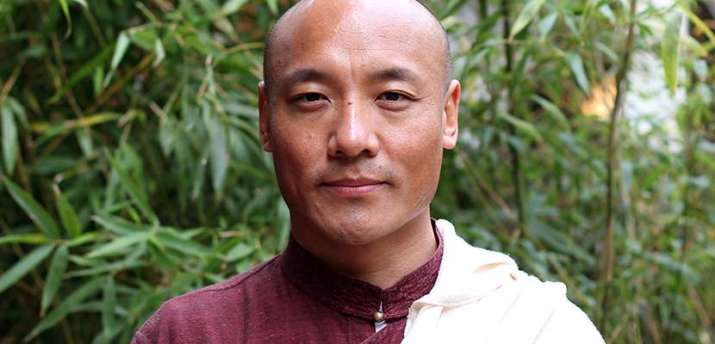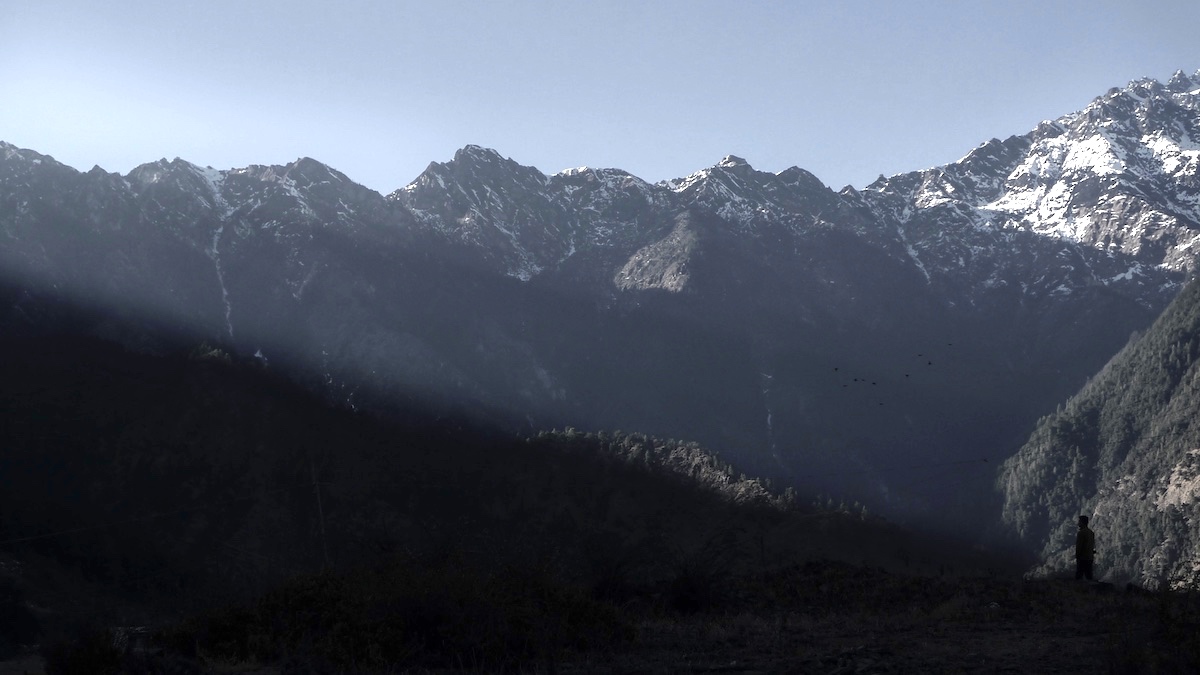FEATURES|COLUMNS|Dharma Gossip
The Dharma in Nature
 Anam Thubten Rinpoche
Anam Thubten RinpocheElaborate, ornate temples are ubiquitous in many Buddhist countries. There are many aspects of those temples that can be appreciated, and their ingenious architecture is just one of them. Visiting is not only an act of worship but a holy sightseeing experience that stimulates one’s interest in art, history, and philosophy. Seeing such grandiosity that marries human ingenuity with the sacred in form can amaze the senses. Temples not only represent the sublime in the Buddha and the Dharma, but also the unique flavor of any given culture. Thai temples have quite a different style from those of Japan, and Tibetan temples, too, have their own unique character, blending in harmony with the majestic landscape of the Himalaya.
It is human nature to seek to create a splendid form to express one’s devotion to something great, or to feel a connection with that greatness by capturing it in a tangible form. This is equally true for both religious and secular forms. The Statue of Liberty in New York is not a religious symbol, yet in some sense it is elevated to the sacred in the hearts of many, all over the world. It captures everyone’s imagination upon seeing it and invokes our aspiration for liberty, equality, and justice for all. Some of my friends call her “The Green Tara.” Huge amounts of money have also been poured into creating astonishing monuments commemorating the heroes of a revolution, or city halls with imposing façades.
Many years ago, I visited the Notre-Dame cathedral in Paris, one of the most famous buildings in the world. It was filled with visitors from everywhere, many of whom appeared to be just tourists checking off the famous landmark on their to-do list along with trying the fresh local croissants. Others among them were moved and were praying. The cathedral was truly magnificent; the memory of light shining through its multihued stained-glass windows is not easy to forget. For centuries, the cathedral was important for many Christians as a place where they could pray, contemplate, and be in touch with the Divine. On another visit, one of the people with me was amazed by it yet simultaneously felt uncomfortable, sensing its historical association with the dictatorial power of the Church.
In the beginning, temples were built for faith-related reasons as well as one major practical purpose: they were places where people wouldn’t get too cold or too hot and could have a roof over their heads to protect them from the elements. Some temples are well-loved and surrounded by extramundane stories. Toward the end of last year, I had the opportunity to see an ancient temple in South Korea. Being there was like being at home, in that my heart felt overwhelming joy and comfort. A painting of Guan Yin gave me the sense of a compassionate Divine Mother gazing at me, understanding who I am, understanding the depths of my life, offering a universal love that my heart had been longing for. Most probably, everyone has this longing. A similar feeling fell upon me when, at early an age, I visited a famous temple dedicated to Avalokiteshvara with some of my relatives, and those fond memories have stayed with me, etched in my mind in vivid images.
Yet many people also find deep peace, transcendence, and awakening in nature—whether in a forest, among mountains, or in a desert. Dzogchen masters such as Longchenpa (1308–64), Jigme Lingpa (1730–98), and Shabkarpa (1781–1851) invite us in their writings to enter the wilderness alone and dive into the Dharma, so that an authentic spiritual awakening can occur. Nature has the power to wash away all ego-centered mental chatter, worries, and anxieties, allowing us to feel a deep serenity and to see the way things are in the grand picture of reality. Nature’s magic lures us to tap into a greater truth that is not polluted by manmade theories and concepts, and liberates us from the shackles of conventions that often go against the purity of our hearts.
 Photo by Craig Lewis. From newlightdreams.com
Photo by Craig Lewis. From newlightdreams.com
For the past few years, I have led a Chöd retreat in Canyon De Chelly in the southwestern United States. Chöd is a tantric Buddhist practice embraced by the wandering yogis of the past. People have often engaged in the practice alone in the wilderness, far from civilization. Its chanting is accompanied by a haunting melody and simple musical instruments. On the retreats, we have our own tents, refrain from taking showers, stop shaving, and eat simple foods. The best part of the retreats is that we practice outdoors, under the trees, with some of us sitting on folding chairs and others on the ground. Such a setting brings with it a sense of closeness between everyone there. Thankfully, there is also no smartphone reception. Each night, many of us gaze into the sky, amazed by the majesty of the celestial bodies overhead, as if seeing them for the first time. I always return with the realization that nature is a true temple in which the nectar of the Dharma flows on its own in our consciousness.
Redwoods, oaks, red madrone, squirrels, crows, eagles, sunrises, clouds, the ocean, hills—all of these make Northern California a special pilgrimage place for the those who worship nature. Luckily, I’m residing in this part of the world. In the mornings, I often go outside to catch the golden rays of sunrise. I feel that it clears my mind as I am embraced by an unbelievable beauty that blesses my whole day with a thousand joys. If you do this, remember to breathe deeply few times, and stretch out your arms. I hope this little suggestion will add more magic to your communion with the world. You can even call it “mindfulness of nature!”
See more
Related features from Buddhistdoor Global
Ten Simple Ways to Cultivate Joy and Health this Decade
Visions of Spiritual Ecology: Diane Barker’s Photography of Tibetan Nomadic Life in China
A Humanitarian Action for Other Living Beings: Creating Space for Urban Biodiversity through Buddhist Gardening
Related news from Buddhistdoor Global
New UK Study Highlights the Benefits of Forest Bathing
Sacred Lotus Flowers in Thailand Blossom for the First Time in a Decade
Each Autumn, This Ancient Gingko Tree Rains Gold Upon a Buddhist Temple in China














